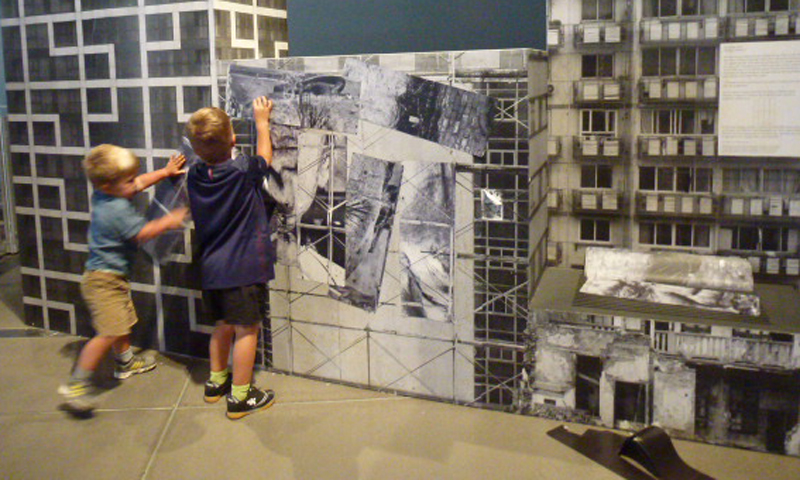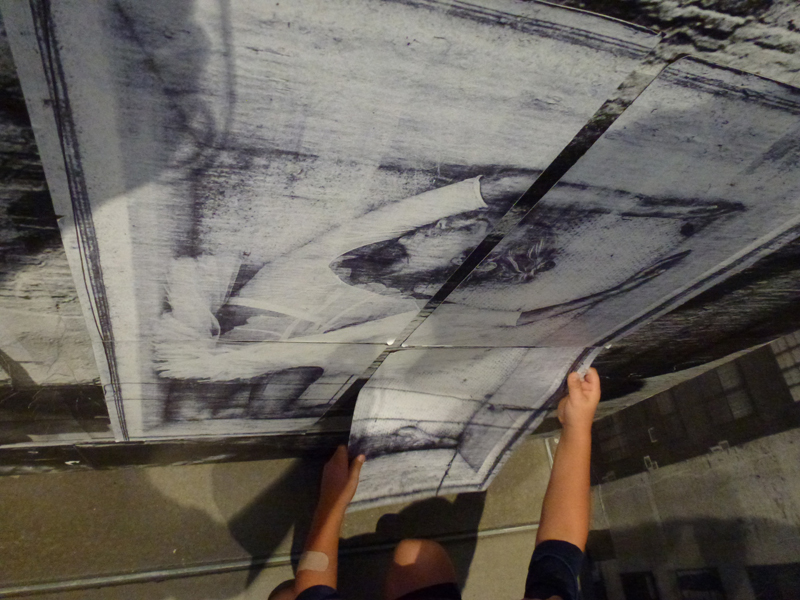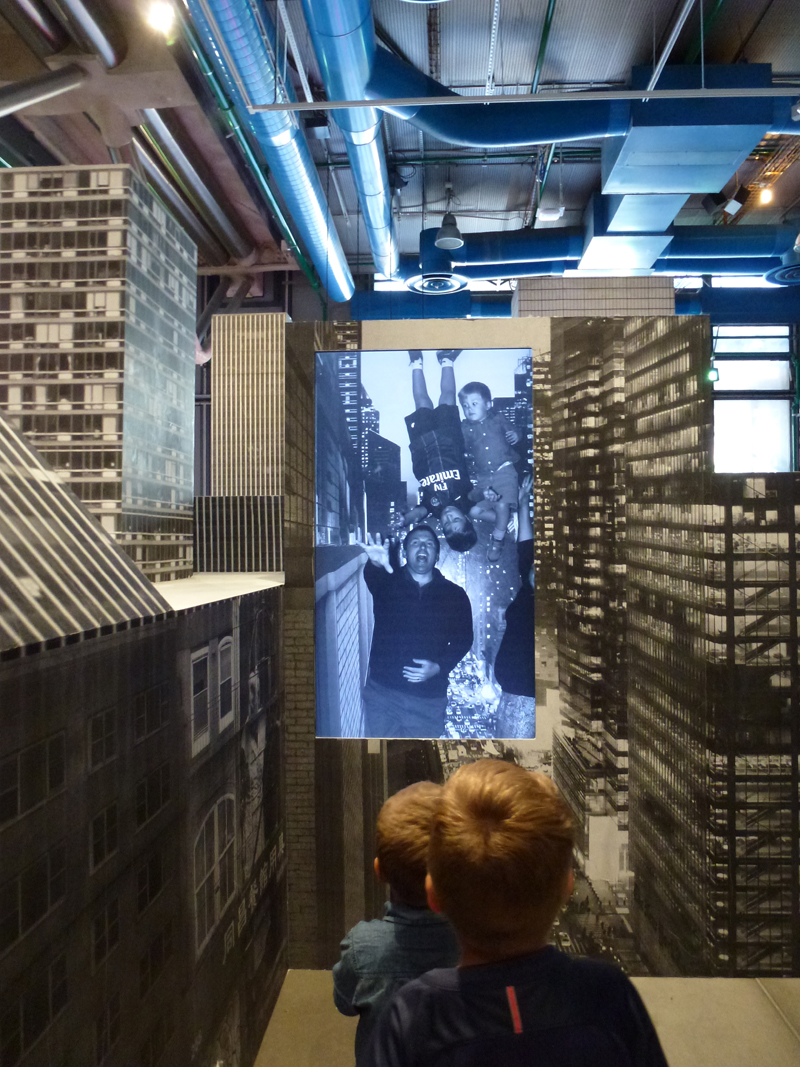
JR is an artist who started by working on the streets. His first project to hit the headlines was in 2006, when he pasted huge portraits of “thugs” in the bourgeois districts of Paris. Ten years later, he is working in three of Paris’ most prestigious art institutions at one time. This summer we were in Paris to see his new artwork for children, but let me start by introducing the project that received the most attention.

“The most important thing,” JR says, “is where I put my photos and the meaning they take on depending on the place”. In 2006, he was pasting photographs on the Security Fence/ Separation Wall between Israel and Palestine, and this summer (2016) he is pasting photographs at the Louvre in Paris. The Louvre is an unexpected place to see JR’s artwork, and it made headlines around the world. His Louvre “take over” began by making I.M. Pei’s renowned pyramid disappear. Followed by a 24 hour party that included a magic show, night tours of the museum, concerts, and breakfast by chef Jean Imbert. It was over before our family arrived in Paris, so we headed to the Centre Pompidou to see his installation designed for children.
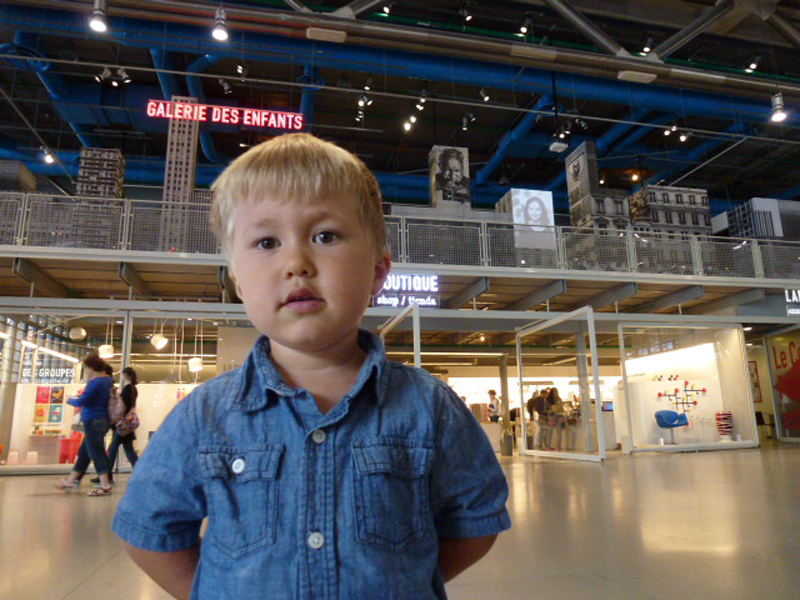
As you take the first set of escalators up to the adult galleries, you will pass the Galerie des enfants. The most recent exhibition (which is closed now) was a mini-sized collage of streetscapes from JR’s notable projects, including New York and Rio. My two boys raced ahead of me and passed just about everyone to climb on top of the towers. If you follow or collect JR’s work, then this makes so much more sense than stopping to listen to the directions of the education staff. As you will quickly catch on from his Instagram account, playing on top of skyscrapers, or with our perception of gravity, is as much fun for JR as his occupation with portraits. We quickly learned that these skyscrapers were not for us to climb.
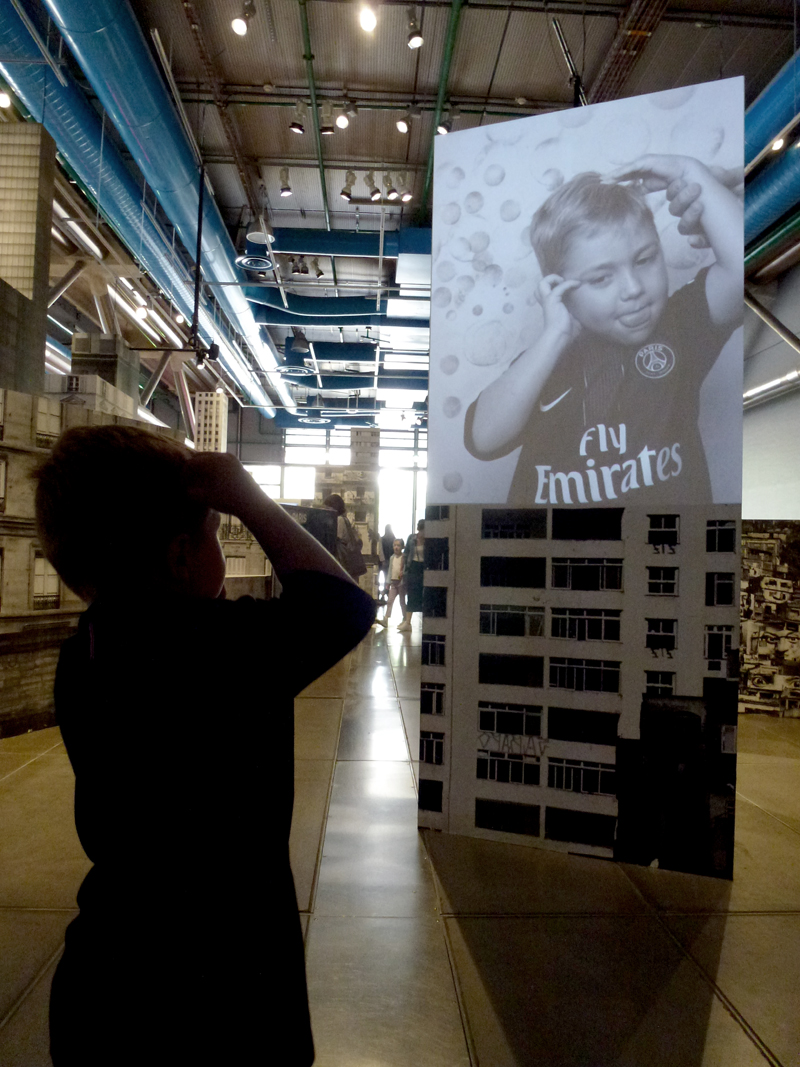

There were three ways you could interact with the installation. First, you could make your own portrait to be digitally projected onto a handful of towers. This included stamping your own background, posing in a photobooth, and searching for your headshot inside the installation. Secondly, you could pretend to be JR pasting a portrait onto the side of the building by piecing together magnetic strips. His recognizable portraits became fairly challenging puzzles. The third and most enthralling way to interact with the installation was a trompe-l’œil photo shoot. After composing your shot on the stage, it would promptly show up in the nearby streetscape. It was mind bending and fun for all ages to figure out how to make themselves look like they were climbing, flying, or falling off a skyscraper. We made many, many attempts. Thinking forwards and backwards to compose a compelling image.


JR says of his work, “I’m not an artist with a cause. I’m an artist that causes people to think.” And most of his artwork explores important systems of cultural power, identity, and inclusion. The way he intertwines those themes, reflects human scale, and choreographs architecture is captivating. This installation introduced children to the playful process of JR’s studio, but it left out the layers of power that make other projects in his portfolio stand out.
My children also experienced his artwork at the Palais de Tokyo during our trip (which I am writing about next). It was a video documentation of an underground artwork that is not open to the public. We can only experience the documentation of it. It wasn’t specifically made for children, but my children watched the video a few times (and would have stayed longer). It left their minds spinning. They asked questions and peered down holes in the street to look for it afterwards. They were able to feel the story through the aesthetics.
There is a difference between making art for “adult galleries” and “children’s galleries.” The installation at the Centre Pompidou focused on how children play and interact with JR’s process of crafting art. The exhibition primarily focuses on the doing with few deeper questions. Curators typically mold art for children around learning about art rather than an experience of art employing child-like frames of interaction or investigation. Artists working in spaces for children are challenged to adapt their work for an audience that looks, hears, and senses differently. The younger audience is learning to stretch their tanks for empathy and expand their modes of looking. However, there is potential for both curators and artists to make more rigorous work for this audience.
It is unique to commission an artist like JR to work in a children’s gallery. The setting does not receive the media attention or critical discourse that other institutions attract. While being an artist-in-residence for the Olympics and the taking over the largest museum in the world, JR also tried to figure out how his work made sense for a new audience. We loved this special opportunity to hang out in JR’s world!

